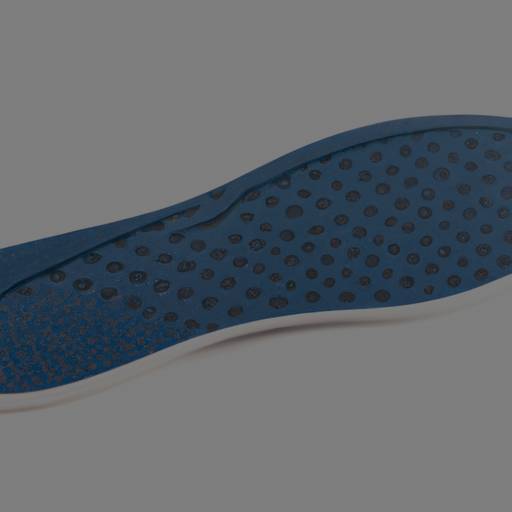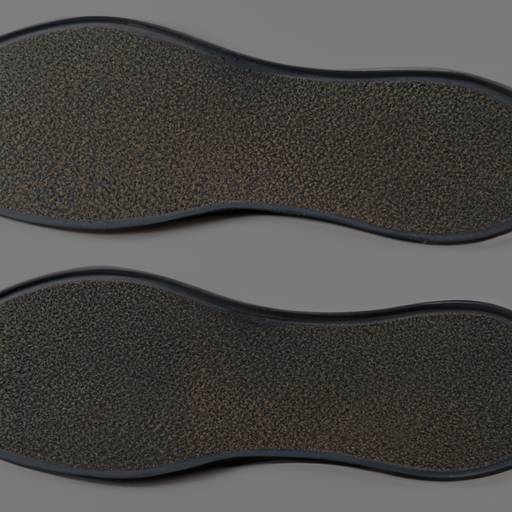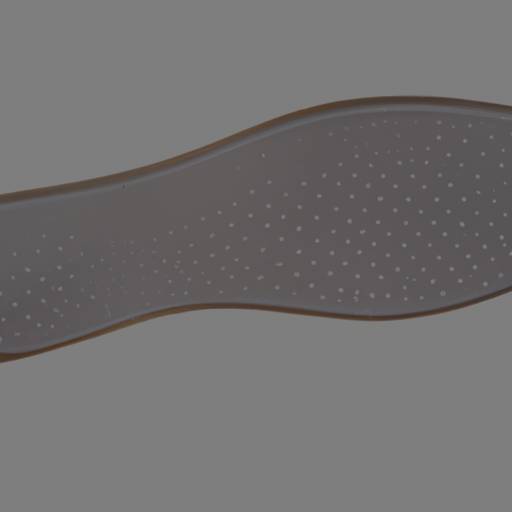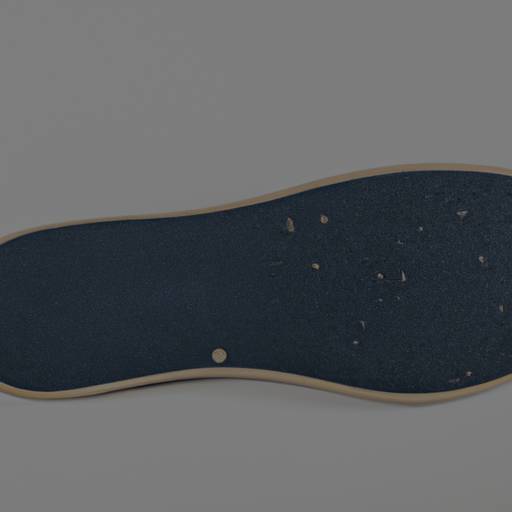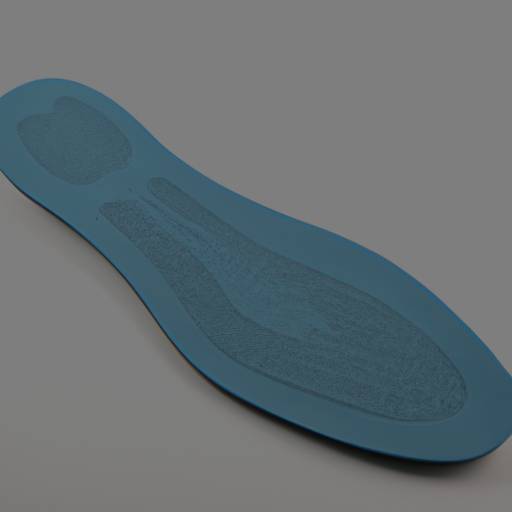Choosing Between Rigid and Semi-Rigid Orthotics for Arch Support
Understanding Arch Support
Arch support plays a crucial role in maintaining proper foot alignment and promoting overall foot health. The importance of arch support cannot be overstated, especially for individuals with conditions like flat feet or high arches. Proper arch support helps distribute the body’s weight evenly across the feet, reducing stress on the arches and preventing discomfort or pain.
One of the primary ways to provide arch support is through the use of insoles. Insoles, also known as orthotics, are shoe inserts designed to improve foot function and provide additional support. They can be used to address various foot issues, including arch support.
The Importance of Arch Support
Arch support is vital because it helps maintain the natural alignment of the foot and prevents excessive pronation or supination. When the arches are properly supported, the weight is distributed evenly, reducing the risk of strain or injury. Arch support helps alleviate common foot problems such as plantar fasciitis, shin splints, and Achilles tendonitis.
In addition to reducing pain and discomfort, arch support can also improve overall body alignment. Proper foot alignment contributes to the alignment of the ankles, knees, hips, and spine, promoting better posture and reducing stress on other joints.
How Insoles Provide Arch Support
Insoles are designed to provide additional support to the arches of the feet. They come in various shapes, materials, and levels of rigidity to cater to different foot types and conditions. Insoles with arch support are typically made with a contoured shape that conforms to the natural arches of the foot.
By inserting arch support insoles into your shoes, you can help provide stability and cushioning to the arch area. This helps reduce the strain on the arches and provides a more supportive foundation for the feet. Arch support insoles can be used in both athletic shoes and everyday footwear to ensure that your feet receive the necessary support throughout the day.
It’s important to note that the level of arch support needed may vary depending on individual foot anatomy and specific foot conditions. Some individuals may require more rigid or semi-rigid orthotics, while others may benefit from softer, cushioned arch support. Consulting with a healthcare professional or podiatrist can help determine the appropriate level of arch support for your specific needs.
Understanding the importance of arch support and how insoles can provide that support is essential in choosing the right type of orthotics for your feet. In the following sections, we will explore the characteristics and pros and cons of rigid orthotics and semi-rigid orthotics to help you make an informed decision.
Rigid Orthotics
Rigid orthotics are a type of orthotic device designed to provide firm support and stability to the feet. They are typically made from rigid materials such as hard plastic or carbon fiber. Let’s take a closer look at what rigid orthotics are and explore their pros and cons.
What are Rigid Orthotics?
Rigid orthotics are custom-made inserts that are specifically tailored to fit an individual’s feet. They are designed to control and limit the motion of the feet and provide support to the arches. The rigid nature of these orthotics helps to stabilize the foot and prevent excessive pronation (inward rolling) or supination (outward rolling) of the foot during walking or running.
Rigid orthotics are commonly prescribed for individuals with conditions such as plantar fasciitis, flat feet, high arches, or certain foot deformities. These orthotics aim to redistribute the forces exerted on the feet and provide proper alignment, which can help alleviate pain and discomfort.
Pros and Cons of Rigid Orthotics
Rigid orthotics offer several benefits for individuals seeking arch support:
Pros:
- Stability: Rigid orthotics provide excellent stability and control over foot motion, making them effective in managing certain foot conditions.
- Durability: Due to their rigid construction, these orthotics are highly durable and can withstand heavy use over time.
- Customization: Rigid orthotics are custom-made to fit an individual’s specific foot shape and provide personalized support and comfort.
- Arch Support: These orthotics are designed to provide superior arch support, helping to relieve arch-related pain and discomfort.
However, it’s important to consider some potential drawbacks of rigid orthotics:
Cons:
- Adaptation Period: It may take some time for the feet to adjust to the rigid nature of these orthotics. Initially, they may feel uncomfortable or cause mild discomfort until the feet become accustomed to the new support.
- Bulkiness: Rigid orthotics can be thicker and bulkier than other types of orthotics, which may require adjustments to footwear or limit the types of shoes that can be worn.
- Limited Shock Absorption: The rigid construction of these orthotics may offer less shock absorption compared to other types of orthotics, which could be a consideration for individuals with foot conditions that require additional cushioning.
When choosing between rigid and semi-rigid orthotics, it’s important to consider various factors such as the specific foot condition, comfort, and individual preferences. Consulting with a healthcare professional or podiatrist can help determine the most suitable option for your arch support needs.
In the next section, we will explore semi-rigid orthotics as an alternative option for individuals seeking arch support.
Semi-Rigid Orthotics
What are Semi-Rigid Orthotics?
Semi-rigid orthotics are a type of arch support insole that falls between rigid orthotics and flexible orthotics in terms of firmness. These orthotics are designed to provide a balance between support and flexibility, making them a popular choice for individuals who require moderate arch support.
Semi-rigid orthotics are typically made from a combination of materials such as plastic or carbon fiber, which provide structural stability while allowing for some degree of flexibility. The semi-rigid nature of these orthotics helps to control excessive foot motion and stabilize the arches, providing relief for conditions such as plantar fasciitis, overpronation, and flat feet.
One of the key benefits of semi-rigid orthotics is their ability to distribute pressure evenly across the feet. This not only helps to alleviate pain and discomfort but also promotes proper alignment of the feet and ankles. Additionally, the moderate level of flexibility allows for a more natural foot movement, making them comfortable for everyday use.
Pros and Cons of Semi-Rigid Orthotics
Like any orthotic, semi-rigid orthotics have their own set of advantages and considerations:
Pros:
- Moderate arch support: Semi-rigid orthotics provide a balance between support and flexibility, making them suitable for individuals with moderate arch issues.
- Even pressure distribution: These orthotics help distribute pressure evenly across the feet, reducing pain and discomfort caused by imbalances.
- Natural foot movement: The semi-rigid nature allows for a more natural foot movement, enhancing comfort during daily activities.
- Versatility: Semi-rigid orthotics can be used in a wide range of footwear, including athletic shoes, casual shoes, and some dress shoes.
Cons:
- Limited flexibility: Compared to flexible orthotics, semi-rigid orthotics offer less flexibility, which may not be suitable for individuals who require more freedom of movement.
- Takes time to adjust: Some individuals may require an adjustment period to get accustomed to the semi-rigid support and feel of these orthotics.
- May not fit all shoes: While semi-rigid orthotics can be used in many types of footwear, they may not fit snugly or comfortably in certain shoe styles with limited space.
When deciding between rigid and semi-rigid orthotics, it’s important to consider your specific needs, foot structure, and the advice of a healthcare professional. For more information on selecting the best arch support insoles for your needs, check out our article on best arch support insoles.
Remember, the purpose of orthotics is to provide support and alleviate discomfort. It’s crucial to listen to your body and consult with a healthcare professional if you experience any pain or discomfort while wearing orthotics.
Choosing Between Rigid and Semi-Rigid Orthotics
When it comes to selecting the right type of orthotics for arch support, there are several factors to consider. Each individual’s needs and preferences can vary, so it’s important to evaluate these aspects before making a decision.
Factors to Consider
- Foot Condition: Understanding the specific needs of your feet is crucial in determining whether rigid or semi-rigid orthotics will be more beneficial. If you have a foot condition that requires more stability and support, such as plantar fasciitis or flat feet, rigid orthotics may be the better choice. On the other hand, if you have a normal or flexible arch, semi-rigid orthotics may provide sufficient support.
- Activity Level: Consider your activity level and the types of activities you engage in regularly. If you participate in high-impact sports or activities that involve repetitive movements, such as running or basketball, you may benefit from the added stability provided by rigid orthotics. Semi-rigid orthotics, on the other hand, can be suitable for individuals with a more moderate activity level or those who engage in activities that require some flexibility, such as dancing or hiking.
- Shoe Types: Take into account the types of shoes you typically wear. Rigid orthotics tend to be thicker and may require more depth in the shoe to accommodate them comfortably. They are often recommended for shoes with removable insoles or shoes with a wider toe box. Semi-rigid orthotics are generally thinner and more flexible, making them suitable for a wider range of shoe styles.
- Comfort: Consider how comfortable you feel wearing either type of orthotics. Some individuals find rigid orthotics too hard or uncomfortable, while others prefer the increased stability they provide. Semi-rigid orthotics offer a balance between support and flexibility, which may be more comfortable for some individuals.
Personal Preferences and Individual Needs
Ultimately, the choice between rigid and semi-rigid orthotics depends on your personal preferences and individual needs. It’s important to consult with a healthcare professional, such as a podiatrist or orthopedic specialist, who can assess your specific foot condition and provide expert guidance. They can help you determine which type of orthotic will best address your arch support needs.
Keep in mind that finding the right orthotics may involve some trial and error. It’s important to give yourself time to adjust and allow your feet to adapt to the new support. If you experience any discomfort or pain while wearing orthotics, it’s recommended to consult with a healthcare professional for further evaluation. For more information on different types of insoles and their benefits, check out our article on best arch support insoles.
By considering the various factors discussed above and seeking professional advice, you can make an informed decision when choosing between rigid and semi-rigid orthotics. Remember, the goal is to find the orthotics that provide the right balance of support, comfort, and functionality for your individual needs.
Caring for Your Orthotics
Once you’ve chosen the right orthotics for your arch support needs, it’s important to take care of them to ensure their longevity and effectiveness. Proper cleaning and maintenance are essential for keeping your orthotics in good condition. Here are some cleaning and maintenance tips to help you care for your orthotics:
Cleaning and Maintenance Tips
- Regularly wipe down your orthotics with a damp cloth or sponge to remove any dirt or debris. Avoid using harsh chemicals or abrasive cleaners, as they may damage the materials.
- If your orthotics have a removable top cover, remove it and clean it separately. Follow the manufacturer’s instructions for cleaning and drying the top cover.
- Allow your orthotics to air dry completely before using or storing them. Avoid exposing them to high heat sources, as extreme temperatures can warp or damage the materials.
- Store your orthotics in a cool, dry place when not in use. Avoid storing them in direct sunlight or humid environments, as this can affect their shape and integrity.
- If your orthotics develop an odor, sprinkle them with a small amount of baking soda and let it sit overnight. Shake off the excess baking soda the next day before using them again.
Replacing Your Orthotics
Even with proper care, orthotics will eventually wear out and lose their effectiveness. The lifespan of orthotics can vary depending on factors such as frequency of use and the materials used in their construction. Here are some signs that indicate it’s time to replace your orthotics:
- Visible signs of wear and tear, such as cracks, frayed edges, or peeling materials.
- Loss of cushioning or support, where the orthotics no longer provide the comfort and arch support they once did.
- Changes in your foot conditions or symptoms, such as increased pain or discomfort, which may indicate that your orthotics are no longer providing the necessary support.
- Excessive flattening or deformation of the orthotics, especially in areas that should maintain their shape.
It’s important to consult with a healthcare professional or podiatrist to determine when it’s time to replace your orthotics. They can evaluate your foot conditions and recommend the appropriate timing for replacement.
By following these cleaning and maintenance tips and knowing when to replace your orthotics, you can ensure that your arch support remains effective and provides the comfort and relief you need. Remember, proper care and maintenance are key to maximizing the lifespan and performance of your orthotics.

